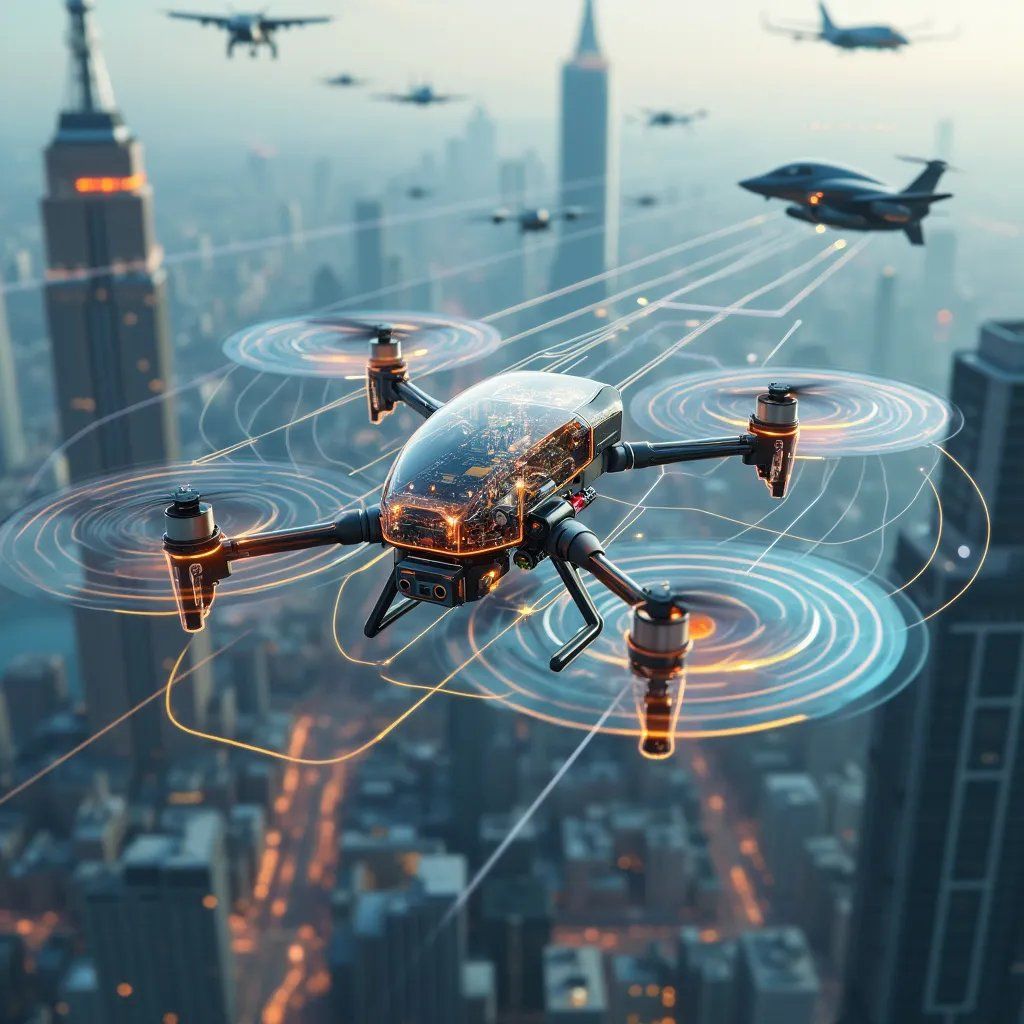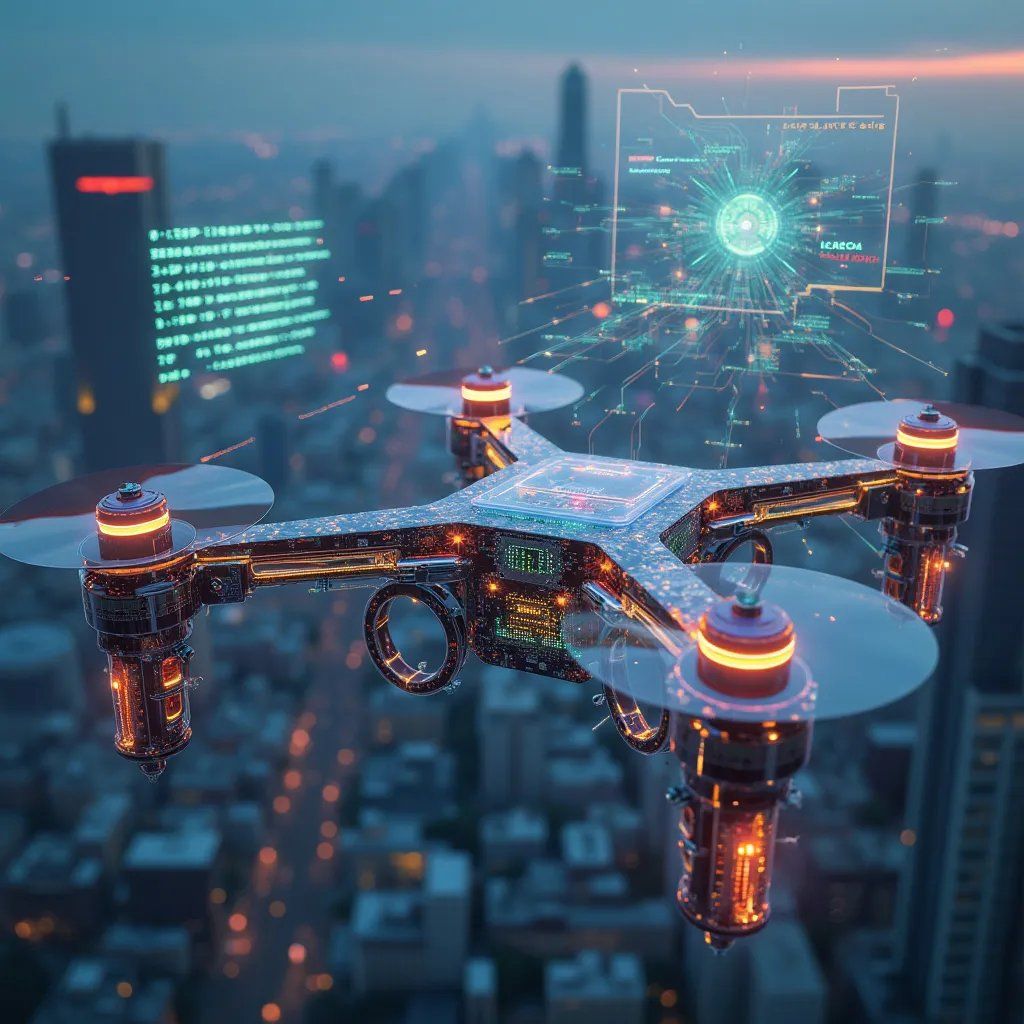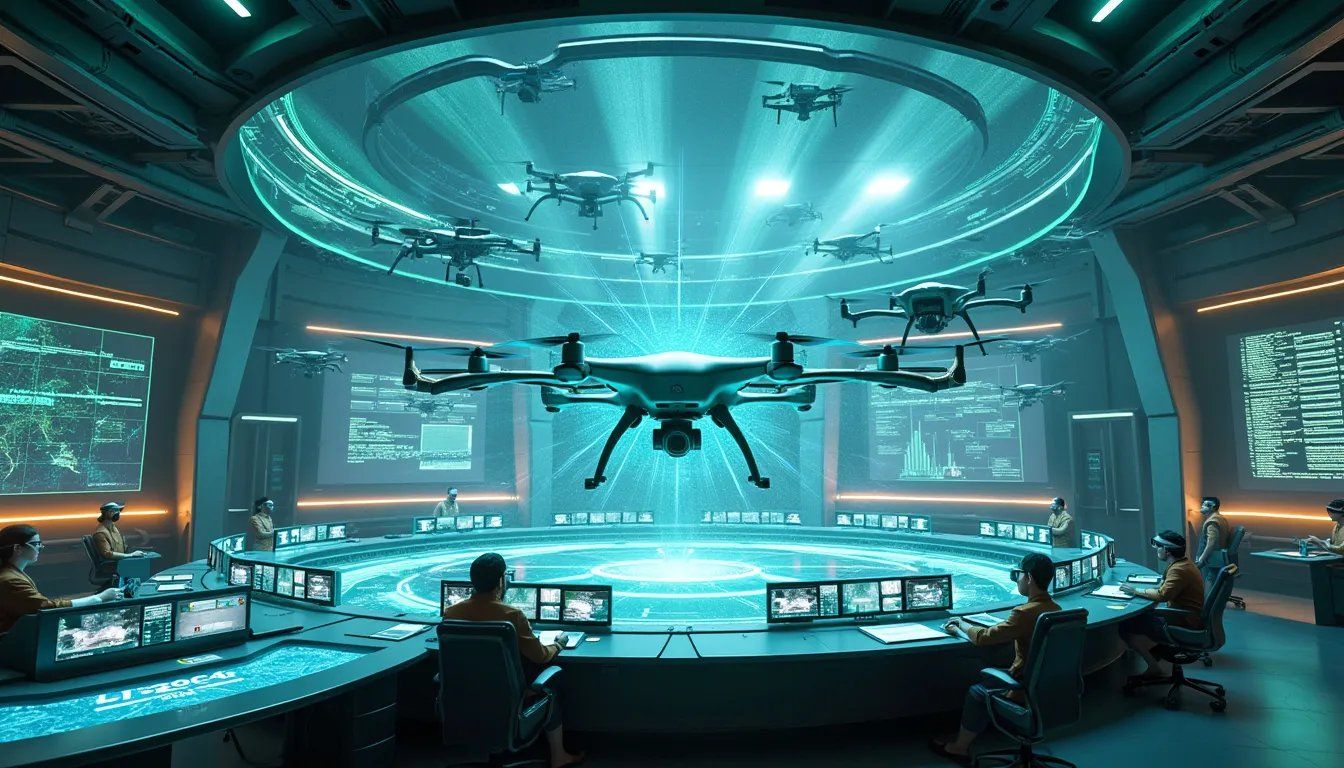Introduction
As unmanned aerial vehicles (UAVs) or drones become increasingly prevalent in our skies, the need for standardized identification protocols has never been more critical. At Decent Cybersecurity, our DroneCrypt IFF system is at the forefront of this technological frontier, designed to align with and contribute to global standardization efforts. This article explores the complex landscape of drone identification protocol standardization, highlighting key initiatives, challenges, and the role of innovative technologies in shaping a unified approach to drone identification.
The Imperative for Standardization
The rapid proliferation of drones across various sectors, from commercial applications to hobbyist use, has created a pressing need for standardized identification protocols. Standardization is crucial for:
- Enhancing Aviation Safety: Ensuring safe integration of drones into shared airspace.
- Facilitating Law Enforcement: Enabling quick and accurate identification of drones for security purposes.
- Promoting Interoperability: Allowing different systems and jurisdictions to communicate effectively.
- Supporting Innovation: Providing a common framework for technological advancements.
- Enabling Global Operations: Facilitating cross-border drone operations and management.
Key Players in Drone Identification Standardization
Several organizations are leading the charge in standardizing drone identification protocols:
1. International Civil Aviation Organization (ICAO)
ICAO has been working on developing global standards for unmanned aircraft systems (UAS) traffic management (UTM):
- UTM Framework: Providing guidelines for integrating drones into civilian airspace.
- Global UAS Registry: Efforts towards creating a unified global drone registration system.
2. European Union Aviation Safety Agency (EASA)
EASA has introduced comprehensive regulations for drone operations in European airspace:
- U-Space Regulation: Establishing a set of services for safe and efficient drone operations, including network identification.
- Remote Identification: Mandating remote ID capabilities for drones operating in EU airspace.
3. Federal Aviation Administration (FAA)
The FAA has been at the forefront of drone regulation in the United States:
- Remote ID Rule: Requiring most drones operating in US airspace to have remote identification capabilities.
- UAS Traffic Management (UTM): Developing a comprehensive system for managing drone traffic in low-altitude airspace.
4. ISO/IEC Joint Technical Committee 1 (JTC 1)
This international standards organization is working on various aspects of drone technology:
- ISO/IEC 21384 Series: Developing standards for UAS components, operations, and identification.
Key Standardization Initiatives
Several key initiatives are shaping the landscape of drone identification protocols:
1. Remote ID Standards
Remote ID is a cornerstone of drone identification standardization:
- Broadcast Methods: Standardizing the ways drones broadcast their identification information.
- Data Format: Defining the structure and content of identification messages.
- Security Protocols: Establishing standards for securing Remote ID transmissions.
DroneCrypt IFF aligns with these efforts by implementing a secure, standardized Remote ID protocol that is compliant with FAA and EASA requirements.
2. Network Identification
Network-based identification systems are being standardized to complement broadcast-based Remote ID:
- Data Exchange Protocols: Defining how identification information is shared between drones, operators, and UTM systems.
- API Standards: Establishing common interfaces for accessing drone identification data.
Our DroneCrypt IFF system incorporates these network identification standards, ensuring seamless integration with emerging UTM ecosystems.
3. Unique Identifier Formats
Efforts are underway to standardize the format of unique identifiers for drones:
- Global Unique Identifier: Working towards a universally recognized format for drone identifiers.
- Registration Systems: Standardizing how drone identifiers are issued and managed across jurisdictions.
DroneCrypt IFF supports these standardization efforts by implementing flexible identifier schemes that can adapt to evolving global standards.
4. Security and Authentication Protocols
Standardizing security measures for drone identification is crucial:
- Cryptographic Standards: Defining common cryptographic algorithms and key management practices.
- Authentication Mechanisms: Establishing standard methods for verifying the authenticity of drone identities.
Our system leverages advanced cryptographic techniques, including post-quantum algorithms like CRYSTALS-Kyber and Dilithium, to meet and exceed these emerging security standards.
Challenges in Standardization
While significant progress has been made, several challenges remain in standardizing drone identification protocols:
1. Technology Diversity
The diverse range of drone technologies and use cases makes it challenging to develop one-size-fits-all standards.
Solution: DroneCrypt IFF employs a modular architecture that can adapt to different technological requirements while maintaining compliance with core standards.
2. International Harmonization
Aligning standards across different countries and regions presents significant diplomatic and technical challenges.
Solution: Our system is designed with international interoperability in mind, supporting multiple identification protocols to facilitate global operations.
3. Legacy System Integration
Integrating new identification standards with existing air traffic management systems poses technical challenges.
Solution: DroneCrypt IFF includes compatibility layers to interface with legacy systems, ensuring a smooth transition to new standards.
4. Privacy Concerns
Balancing the need for identification with privacy rights is an ongoing challenge in standardization efforts.
Solution: We implement privacy-preserving technologies, such as selective disclosure protocols, to address these concerns while maintaining compliance with identification standards.
Case Study: DroneCrypt IFF in Standardization
To illustrate the practical application of standardization efforts, consider this deployment of DroneCrypt IFF in a cross-border European drone delivery project:
The project involved drone operations across multiple EU member states, each with slightly different implementation of the U-Space regulation. DroneCrypt IFF was tasked with ensuring seamless identification and compliance across all jurisdictions.
Key Outcomes:
- Multi-Standard Compliance: DroneCrypt IFF successfully implemented identification protocols compliant with both pan-European U-Space requirements and specific national regulations.
- Interoperability: The system demonstrated seamless interoperability with various UTM systems across different countries.
- Adaptive Security: By leveraging its quantum-resistant cryptography, DroneCrypt IFF met the highest security standards required by all participating nations.
- Privacy Protection: The system’s selective disclosure features allowed it to provide necessary identification data to authorities while protecting sensitive operational information.
This case study demonstrates how standardization-aligned systems like DroneCrypt IFF can facilitate complex, multi-jurisdictional drone operations.
The Role of Innovation in Standardization
While standardization provides a common framework, innovation plays a crucial role in advancing drone identification technologies:
1. Blockchain for Decentralized Identification
Exploring blockchain technology for creating tamper-proof, decentralized drone identification systems:
- Immutable Records: Leveraging blockchain’s immutability for secure identity management.
- Smart Contracts: Implementing automated compliance checks through blockchain-based smart contracts.
DroneCrypt IFF incorporates a blockchain-based authentication system using Hyperledger Fabric, aligning with these innovative approaches while maintaining compatibility with established standards.
2. AI-Enhanced Identification
Leveraging artificial intelligence to enhance the capabilities of standardized identification systems:
- Anomaly Detection: Using AI to identify unusual patterns in drone behavior or identification signals.
- Predictive Analytics: Employing machine learning for anticipating potential identification issues or security threats.
Our system’s AI-powered anomaly detection capabilities complement standard identification protocols, providing an additional layer of security and intelligence.
3. Quantum-Safe Cryptography
Preparing for the post-quantum era in drone identification:
- Quantum-Resistant Algorithms: Implementing cryptographic methods that can withstand potential quantum computing attacks.
- Quantum Key Distribution: Exploring quantum technologies for ultra-secure key exchange in identification systems.
DroneCrypt IFF’s use of post-quantum algorithms positions it at the forefront of these emerging quantum-safe standards.
Future Directions in Drone Identification Standardization
As drone technology continues to evolve, standardization efforts must keep pace. Some key areas for future development include:
1. Dynamic Spectrum Management
Developing standards for adaptive, intelligent use of the radio spectrum for drone identification:
- Cognitive Radio Techniques: Enabling drones to dynamically select optimal frequencies for identification broadcasts.
- Spectrum Sharing Protocols: Standardizing methods for efficient spectrum use in crowded airspaces.
2. Swarm Identification Protocols
Creating standards for identifying and managing drone swarms:
- Collective Identities: Developing protocols for assigning and managing identities for groups of drones operating as a unit.
- Intra-Swarm Communication Standards: Standardizing how drones within a swarm share identification information.
3. Autonomous Systems Standards
Adapting identification standards to fully autonomous drone operations:
- AI Decision-Making Transparency: Developing standards for how autonomous drones communicate their decision-making processes as part of their identification.
- Self-Certifying Systems: Creating frameworks for drones to dynamically validate their own compliance with identification standards.
Conclusion: Shaping the Future of Drone Identification
Standardization efforts in drone identification protocols are crucial for creating a safe, efficient, and innovative drone ecosystem. At Decent Cybersecurity, our DroneCrypt IFF system embodies the principles of these standardization efforts while pushing the boundaries of what’s possible in drone identification technology.
As we navigate the complex landscape of evolving standards and emerging technologies, systems like DroneCrypt IFF play a vital role in bridging current requirements with future possibilities. By aligning with global standards while incorporating innovative features like blockchain authentication, AI-enhanced security, and quantum-resistant cryptography, we’re not just meeting today’s needs – we’re helping to shape the future of drone identification.
The journey towards fully standardized, globally interoperable drone identification systems is ongoing, and it requires collaboration between regulators, industry leaders, and innovators. At Decent Cybersecurity, we’re committed to being at the forefront of this effort, ensuring that our solutions not only comply with current standards but also contribute to the evolution of drone identification protocols.
As we look to the skies of tomorrow, one thing is clear: standardized, secure, and intelligent drone identification will be the cornerstone of a thriving drone ecosystem. With continued innovation and a commitment to global standards, we’re working towards a future where drones can seamlessly and safely share the skies, unlocking the full potential of this transformative technology.
References
[1] International Civil Aviation Organization. (2023). “Unmanned Aircraft Systems Traffic Management (UTM) – A Common Framework with Core Principles for Global Harmonization.” ICAO Document 10039, 2nd Edition.
[2] European Union Aviation Safety Agency. (2023). “Easy Access Rules for Unmanned Aircraft Systems.” Regulation (EU) 2019/947 and Regulation (EU) 2019/945.
[3] Federal Aviation Administration. (2023). “Remote Identification of Unmanned Aircraft.” 14 CFR Part 89.
[4] ISO/IEC JTC 1/SC 6. (2022). “Information technology — Unmanned aircraft systems — Part 3: Operational procedures.” ISO/IEC 21384-3:2022.
[5] Sharma, V., & Kumar, R. (2023). “Blockchain-Based Decentralized Framework for UAV Identity Management.” IEEE Transactions on Aerospace and Electronic Systems, 59(4), 2890-2905.







